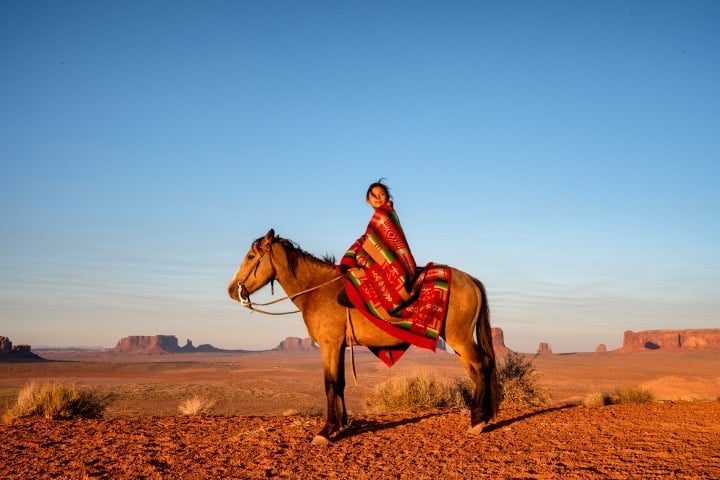
The U.S. Department of Justice (DOJ) announced Wednesday the creation of the Missing or Murdered Indigenous Persons (MMIP) Regional Outreach Program, which will address the high number of missing or murdered Native Americans across the nation.
The DOJ press release stated:
“This new program mobilizes the Justice Department’s resources to combat the crisis of Missing or Murdered Indigenous Persons, which has shattered the lives of victims, their families, and entire Tribal communities,” said Attorney General Merrick B. Garland. “The Justice Department will continue to accelerate our efforts, in partnership with Tribes, to keep their communities safe and pursue justice for American Indian and Alaska Native families.”
MMIP places 10 attorneys and coordinators in five designated regions across the United States dedicated to providing specialized support to United States Attorneys’ offices to assist in “the investigation of unresolved MMIP cases and related crimes, and promoting communication, coordination, and collaboration among federal, Tribal, local, and state law enforcement and non-governmental partners on MMIP issues.”
The attorneys and coordinators will be placed in regions including Alaska, Arizona, Eastern Washington, Minnesota, New Mexico, Northern Oklahoma, Oregon, South Dakota, and Western Michigan.
“These new positions represent the Justice Department’s continuing commitment to addressing the MMIP crisis with urgency and all of the tools at our disposal,” said Deputy Attorney General Lisa O. Monaco. “MMIP prosecutors and coordinators will work with partners across jurisdictions and alongside the Tribal communities who have been most devastated by this epidemic.”
The program is a result of the “Deputy Attorney General’s July 2022 directive to U.S. Attorneys’ offices promoting public safety in Indian country. The program fulfills the Justice Department’s promise to dedicate new personnel to MMIP” consistent with related Executive Order 14053 and a July 2022 order issued by the Department of Justice and Department of the Interior.
Prior to the directive, and after decades of Native Americans suffering from high rates of assault, abduction, and murders, Congress had passed in October 2020 the Not Invisible Act of 2019. The act authorized the establishment of a commission or, according to the Bureau of Indian Affairs (BIA), an “advisory committee composed of law enforcement, tribal leaders, federal partners, service providers, and most importantly — survivors….”
As reported by AP news, that advisory committee met this week “in Albuquerque for one of its final field hearings as it works to develop recommendations on improving the response from law enforcement and coordination within local, state, tribal and federal justice systems.”
The commission’s responsibilities, as stated by the BIA, are to:
enhance protections and basic guidelines to engage, coordinate, and consult with tribal governments, survivors, families, and experts who best understand the needs of tribal communities to lead Federal efforts to ensure indigenous people don’t continue to go missing by developing strategies to address the crisis by developing:
- Administrative changes to identify, report, and respond effectively to cases of missing persons, murder, and human trafficking of Indians within Indian lands;
- Best practices for Tribal, federal, state, and local law enforcement agencies to follow in combatting violent crime against Indians within Indian lands, including missing persons, murder, and human trafficking; and
- Guidance on how to address any gaps in services for Indian victims of violent crime.
The BIA shared that Native American “community advocates describe the [MMIP] crisis as a legacy of generations of government policies of forced removal, land seizures and violence inflicted on Native peoples.” According to the BIA, “Native American and Alaska Native rates of murder, rape, and violent crime are all higher than the national averages.”
The BIA “found that more than four in five American Indian and Alaska Native women (84.3 percent) have experienced violence in their lifetime, including 56.1 percent who have experienced sexual violence…. Overall, more than 1.5 million American Indian and Alaska Native women have experienced violence in their lifetime.”
The agency found that Native American men also suffered from high victimization rates, with “more than four in five American Indian and Alaska Native men (81.6 percent),” or an overall 1.4 million Indigenous men, experiencing “violence in their lifetime.”
The goals of the Not Invisible Act Commission and MMIP Regional Outreach Program are to “hold perpetrators accountable, keep American Indian and Alaska Native communities safe, and provide closure for families.”



